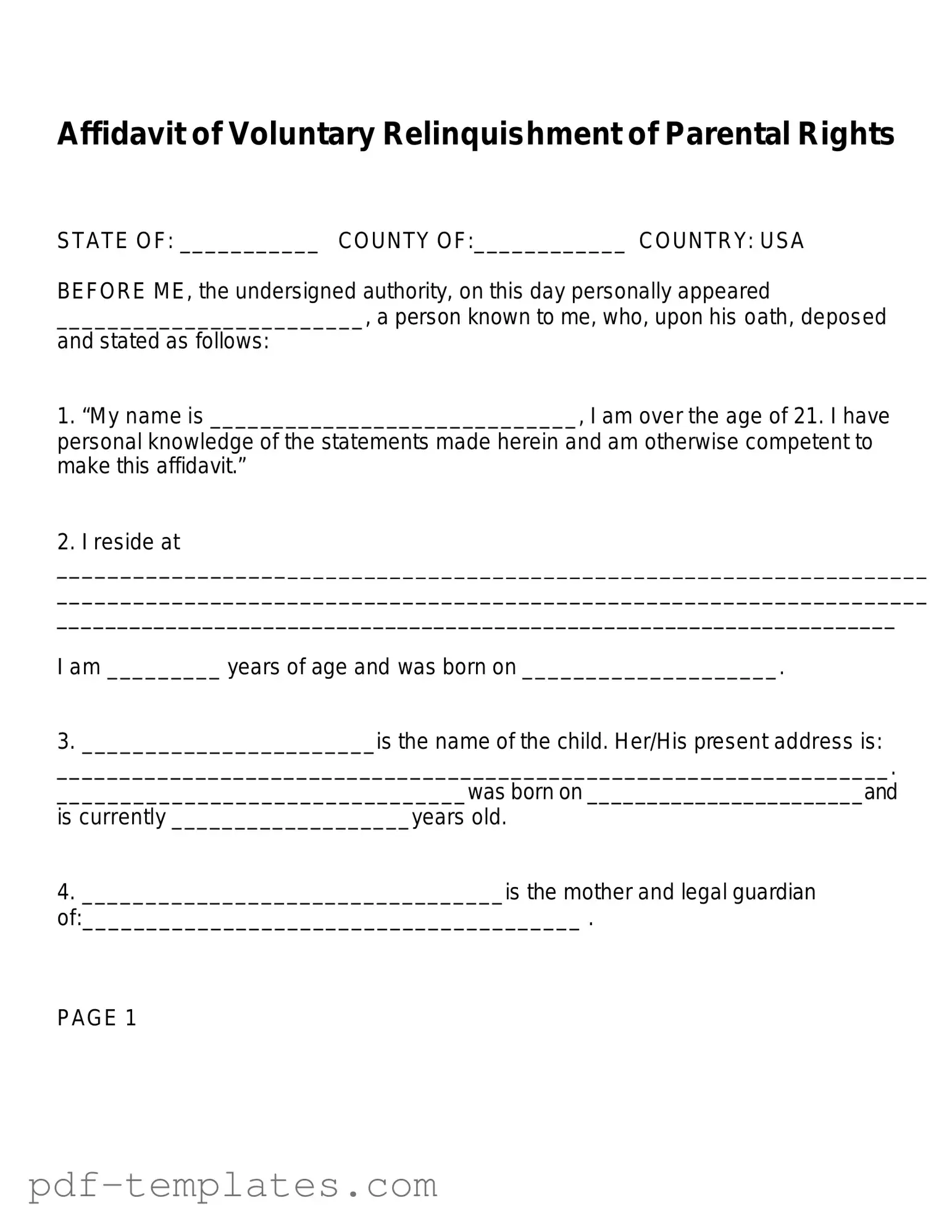The Affidavit of Voluntary Relinquishment of Parental Rights shares similarities with the Consent to Adoption form. Both documents involve a parent voluntarily giving up their rights to a child. In the Consent to Adoption, the biological parent acknowledges their decision to allow another party to adopt their child, thereby relinquishing their parental rights. This process requires the parent to understand the implications of their decision, similar to the Affidavit, which emphasizes the irrevocability of relinquishing rights after a certain period. Both forms ensure that the parent is making an informed choice and that the child's best interests are considered.
Another document that resembles the Affidavit is the Termination of Parental Rights Petition. This legal form is filed in court to formally request the end of a parent's legal rights to their child. Like the Affidavit, this petition requires the petitioner to provide reasons for the termination, focusing on the child's welfare. Both documents serve the purpose of documenting the parent's intent to sever ties legally, though the petition is typically a more formal court process, while the Affidavit is often an initial step taken by the parent.
The Power of Attorney for Child Care is also comparable to the Affidavit of Voluntary Relinquishment of Parental Rights. In this document, a parent grants another individual the authority to make decisions regarding their child's welfare. While the Affidavit involves relinquishing parental rights, the Power of Attorney allows the parent to maintain some level of authority while delegating specific responsibilities. Both documents highlight the importance of parental consent and the need for clarity in the child's care arrangements.
The Trailer Bill of Sale form is an important legal tool that formalizes the ownership transfer of a trailer, ensuring that both involved parties maintain accurate records of the transaction. The significance of this document cannot be understated, as it plays a critical role in preventing ambiguities and disputes that may arise post-sale. For more information on how to properly use this form, you can visit https://documentonline.org/blank-trailer-bill-of-sale/.
Additionally, the Affidavit is similar to the Guardianship Agreement. This agreement establishes a legal relationship where a guardian is appointed to care for a child when the biological parent cannot. Like the Affidavit, this document requires the parent to acknowledge their decision and the reasons behind it. Both forms prioritize the child's best interests and ensure that the arrangements are legally recognized, although guardianship does not terminate parental rights.
Lastly, the Declaration of Paternity can be compared to the Affidavit of Voluntary Relinquishment of Parental Rights. This document is used to establish a legal father-child relationship, often in situations where the parents are not married. While the Affidavit focuses on relinquishing rights, the Declaration affirms them. Both documents require the parties involved to be aware of their rights and responsibilities regarding the child, underscoring the importance of clear legal documentation in matters of parental status.
